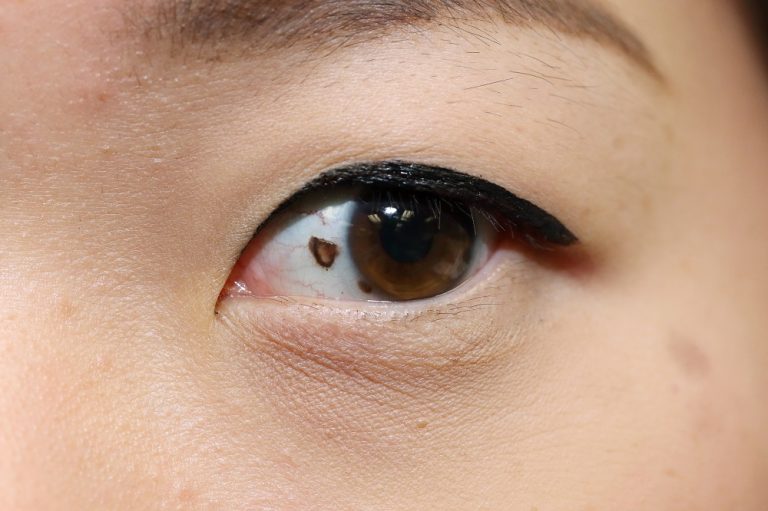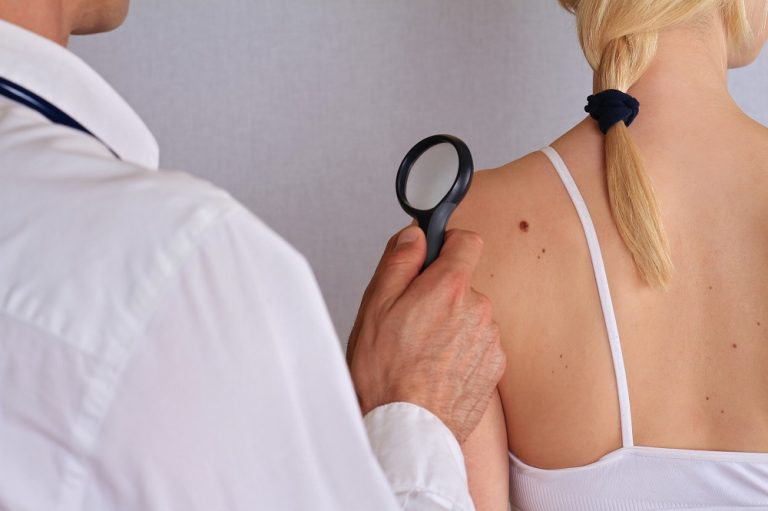8 Facts You Need to Know About Skin Cancer
May is National Skin Cancer Prevention and Detection Month and Melanoma Awareness Month. As skin cancer is the most common type of cancer in the U.S. and the most treatable, when caught early, it’s important to understand what you can do to protect yourself.
Background:
- Each year there are more new cases of skin cancer than the combined incidence of breast, prostate, lung and colon cancers.
- The 3 most common types of skin cancer are basal cell carcinoma– the most common type; squamous cell carcinoma– the second most common type; and melanoma – the least common yet deadliest type.
- The overall lifetime risk of developing skin cancer is one in five (for both melanomas and non-melanomas).
- The estimated five-year survival rate for patients whose melanoma is detected early is about 98% in the U.S. The survival rate falls to 62% when the disease reaches the lymph nodes and 18% when the disease metastasizes to distant organs. [i]
Here’s a list of 8 facts you need to know about skin cancer. And make sure you read about related work by NFCR-funded scientists Dr. James Basilion and Dr. Daniel Von Hoff.
1. The vast majority of skin cancers are caused by ultraviolet (UV) light

2. … but not all skin cancers are caused by the sun

3. Melanomas can develop anywhere on your body

4. Practice safe sunning

When possible, limit your outdoor activities between the hours of 10am and 2pm when the sun’s rays are strongest.
5. Avoid indoor tanning salons

6. Regular skin checks are key
Regular checks by a doctor or nurse specialist, especially if you have a large number of moles or other risk factors, is key.
In addition, The Skin Cancer Foundation recommends that you do a head-to-toe self-examination of your skin every month. See the ABCDEs of skin cancer for information on what to look for. Make sure to tell your doctor if you see any new, unusual or changing moles or growths on your skin.
While these skin checks will not prevent skin cancer from developing, they can help to catch it early when it is most easily treated.
7. Kids can get skin cancer too
Melanoma accounts for up to 3% of all pediatric cancers. The treatment of childhood melanoma is often delayed due to misdiagnosis of pigmented lesions, which occurs up to 40% of the time. [v]
8. Cutting-edge research is helping us attack skin cancer head on

Dr. Daniel Von Hoff, Co-Director of the NFCR Center for Targeted Cancer Therapies, has devoted his career to translational medicine – the movement of new therapies from the research institution to patient care – and has personally been a part of over 200 clinical trials. Dr. Von Hoff and his colleagues have conducted early clinical investigations of many new cancer agents, including: gemcitabine, docetaxel, paclitaxel, topotecan, irinotecan, fludarabine, mitoxantrone, dexrazoxane, nab-paclitaxel, vismodegib and others. NFCR’s support for Dr. Von Hoff’s research with gemcitabine was profoundly successful as it became the first drug to improve survival for pancreatic patients. Many treatments he worked on are now helping tens of thousands of patients with advanced basal cell carcinoma as well as breast, ovarian, prostate, colon, leukemia and pancreatic cancer today.
The ABCDEs of Skin Cancer
When is a mole cancer? Look for these signs…
Asymmetry. One half doesn’t match the appearance of the other half.
Border irregularity. The edges are ragged, notched or blurred.
Color. The color (pigmentation) is not uniform. Shades of tan, brown and black are present. Dashes of red, white and blue add to a mottled appearance.
Diameter. The size of the mole is greater than 1/4 inch (6 mm), about the size of a pencil eraser. Any growth of a mole should be evaluated.
Evolution. There is a change in the size, shape, symptoms (such a itching or tenderness), surface (especially bleeding) or color of a mole.
Source: http://wb.md/2oqwqVU
[i] http://www.skincancer.org/skin-cancer-information/skin-cancer-facts
[ii] http://www.skincancer.org/skin-cancer-information/skin-cancer-facts
[iii] http://www.mayoclinic.org/diseases-conditions/melanoma/basics/symptoms/CON-20026009
[iv] https://www.cancer.gov/about-cancer/causes-prevention/risk/alcohol
[v] http://www.skincancer.org/skin-cancer-information/skin-cancer-facts#pediatrics













